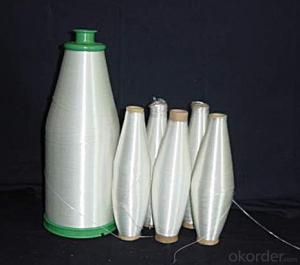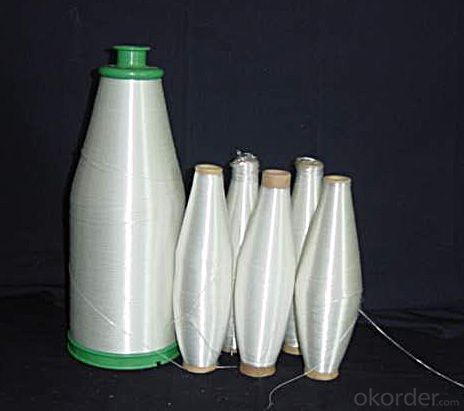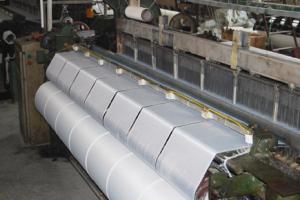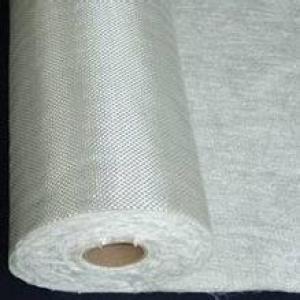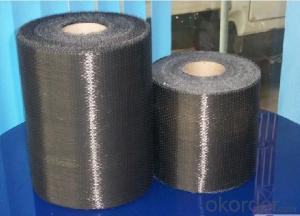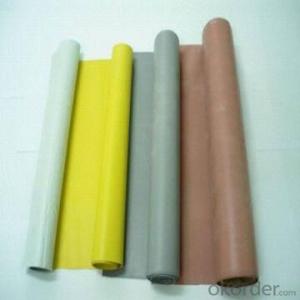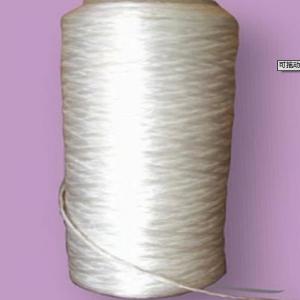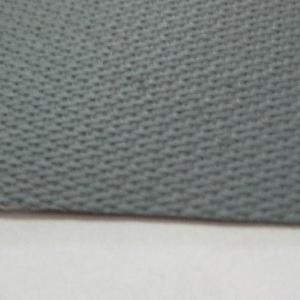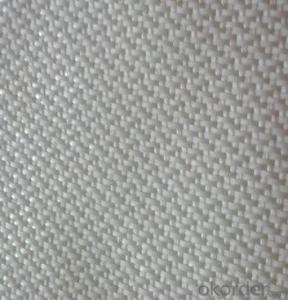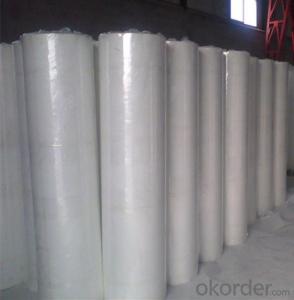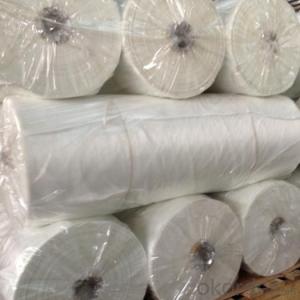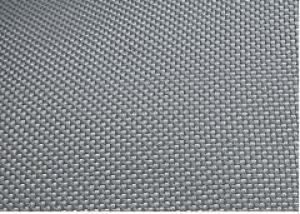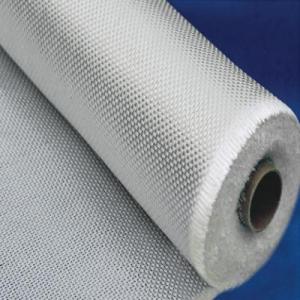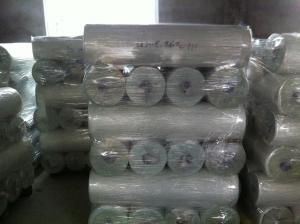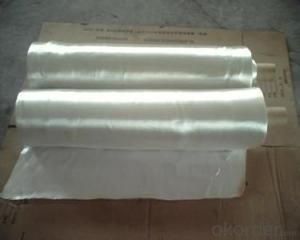Fiberglass Sunscreen Fabric Textile Yarns
- Loading Port:
- China Main Port
- Payment Terms:
- TT or LC
- Min Order Qty:
- 20000 kg
- Supply Capability:
- 200000Kg Per Month kg/month
OKorder Service Pledge
OKorder Financial Service
You Might Also Like
1.Brief Introduction
C or E textile glass a kind of additional twisting and plying yam. With the characteristics of high strength, corrosion resistance, heat resistance and high moisture absorption, no-alkali yam has high electric insulation, so it used to produce weaved wires and cables’ wrap cladding, protection sleeve, train of mine, insulation materials of electric machinery, every yam of woven cloth and other industrial yam. It can also supply big and little paper cube and other cube yams with different shapes and different roll weight.
2.Product Features
Good Dispersibility.
Less fuzzy.
Density Even.
3.Product Specifications
Product Code | Tex | diameter (um) | Sizing. | breaking strength | Twist |
CC7.5-22-1/2 110S | 44 | 7.5 | paraffin | ≥15.5 | 110±10 |
EC9-33-1/2 65S | 66 | 9 | ≥24.1 | 65±5 | |
EC8-25-1/2 65S | 50 | 8 | ≥19.2 | 65±5 | |
CC9-33-1/2 65S | 33 | 9 | ≥20.6 | 65±5 | |
CC11-44-6/0 | 264 | 11 | ≥81.6 | ||
CC11-44-1/3 110S | 132 | 11 | silane | ≥40.8 | 28±3 |
EC9-68-1/0 28Z | 68 | 9 | ≥18.0 | 28±3 |
Special specification can be produce according to customer requirements.
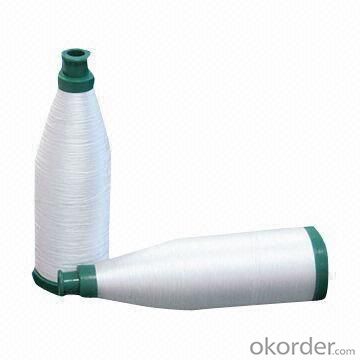
4.FAQ
Storage:
Unless otherwise specified,It should be stored in a dry, cool and rain-proof area. It is recommended that the room temperature and humidity should be always maintained at 15℃~35℃ and 35%~65% respectively.
- Q: Can fiberglass fabric be used for insulation in mining operations?
- Fiberglass fabric has the capability to be utilized as insulation in mining operations. Its remarkable thermal insulation properties are widely recognized, rendering it a suitable choice for various applications, including mining operations. By effectively capturing and inhibiting the transfer of heat, it contributes to maintaining a consistent temperature within mining environments. Furthermore, the high temperature, corrosion, and chemical resistance of fiberglass fabric make it particularly well-suited for the frequently encountered harsh conditions in mining operations. Its lightweight and flexible characteristics also facilitate easy installation and handling in diverse mining structures and equipment. In summary, fiberglass fabric presents itself as a dependable and efficient solution for insulation in mining operations.
- Q: Is fiberglass fabric resistant to termites?
- No, fiberglass fabric is not resistant to termites. Termites are known to feed on organic materials such as wood, paper, and fabric, and fiberglass fabric is not exempt from their feeding habits. While fiberglass fabric may not provide a suitable food source for termites, they can still cause damage to the fabric by chewing through it or using it as a pathway to reach other materials. Therefore, it is important to take appropriate measures to protect fiberglass fabric from termite infestation, such as using termite barriers, regular inspections, and treating the surrounding area for termites if necessary.
- Q: Can fiberglass fabric be used for welding blankets?
- Yes, fiberglass fabric can be used for welding blankets. Fiberglass fabric is heat-resistant and has excellent fire-retardant properties, making it ideal for protecting against sparks, slag, and molten metal during welding operations. It can withstand high temperatures without melting or burning, providing a reliable barrier between the welding area and surrounding objects. Additionally, fiberglass fabric is lightweight and flexible, making it easy to handle and maneuver. Its durability and resistance to abrasion further enhance its suitability for welding blankets, ensuring long-lasting protection and safety in welding environments.
- Q: What are the different applications of fiberglass fabric in the oil and gas industry?
- Fiberglass fabric finds several applications in the oil and gas industry due to its unique properties and benefits. Some of the different applications of fiberglass fabric in this industry are: 1. Insulation: Fiberglass fabric is commonly used as insulation material in the oil and gas industry. It is employed to insulate pipes, tanks, and equipment to prevent heat loss or gain. The fabric's thermal resistance helps maintain consistent temperatures, reducing energy consumption and ensuring efficient operations. 2. Fire protection: Fiberglass fabric has excellent fire-resistant properties, making it an ideal material for fire protection systems in the oil and gas industry. It is used for creating fire barriers, fireproof curtains, and fire blankets to contain and control flames in case of emergencies. 3. Corrosion resistance: The oil and gas industry often deals with corrosive substances, and fiberglass fabric's corrosion resistance makes it highly suitable for various applications. It is used to fabricate corrosion-resistant linings for pipes, tanks, and vessels, protecting them from degradation caused by harsh chemicals or environmental conditions. 4. Reinforcement: Fiberglass fabric is commonly employed as reinforcement material in composite structures used in the oil and gas industry. It is used to strengthen pipes, tanks, and other equipment, enhancing their structural integrity and durability. The fabric's high tensile strength and low weight make it an excellent choice for composite reinforcement. 5. Filtration: Fiberglass fabric is utilized for filtration purposes in the oil and gas industry. It is used to manufacture filter bags and filter media that effectively capture solid particles, contaminants, and impurities from gases and liquids. These filters ensure the smooth operation of various processes and prevent equipment damage caused by unwanted particulates. 6. Abrasion resistance: In certain applications where equipment is exposed to abrasive materials or environments, fiberglass fabric is used as a protective layer. It helps prevent wear and tear, extending the lifespan of equipment such as pipes, valves, and tanks. 7. Electrical insulation: Fiberglass fabric is an excellent electrical insulator, and its non-conductive properties make it suitable for various electrical applications in the oil and gas industry. It is used for insulating cables, wires, and electrical equipment, ensuring safety and preventing electrical hazards. Overall, fiberglass fabric offers numerous advantages in terms of insulation, fire protection, corrosion resistance, reinforcement, filtration, abrasion resistance, and electrical insulation in the oil and gas industry. Its versatile nature and ability to withstand harsh environments make it a preferred material for many critical applications in this sector.
- Q: How is fiberglass fabric painted?
- Various techniques can be used to paint fiberglass fabric. The initial step involves thoroughly cleaning the surface to remove any dirt, grease, or loose particles. Once the surface is clean and dry, applying a primer can enhance adhesion and promote better paint adherence to the fabric. Fiberglass fabric can be painted using different types of paint, including acrylic, latex, or oil-based paints. It is crucial to select a paint that suits the specific application and desired finish. There are three options for applying paint to fiberglass fabric: brush, roller, or spray gun. The choice depends on the fabric's size and desired finish. For smaller areas or a textured finish, a brush or roller is typically utilized. Conversely, a spray gun is more suitable for larger areas or when a smooth and even finish is desired. When applying the paint, it is essential to follow the manufacturer's instructions regarding application techniques, drying times, and recommended number of coats. It is generally advised to apply multiple thin coats rather than a thick coat to achieve a more even and durable finish. After painting, it is crucial to allow the paint to fully dry before using or handling the fiberglass fabric. The drying time can vary depending on the paint type and environmental conditions, ranging from a few hours to a few days. In summary, properly painting fiberglass fabric involves thorough surface preparation, selecting the appropriate paint, and utilizing the right technique. With adequate care and maintenance, the painted fiberglass fabric can maintain its color and finish for an extended period.
- Q: What is the tear strength of fiberglass fabric?
- The tear strength of fiberglass fabric can vary depending on the specific type and weave of the fabric. However, generally speaking, fiberglass fabric is known for its excellent tear strength, making it highly resistant to tearing or ripping under normal circumstances.
- Q: Is fiberglass fabric easy to work with?
- Yes, fiberglass fabric is generally easy to work with. It is lightweight, flexible, and can be easily cut, molded, and shaped to fit various surfaces and structures. Additionally, it is resistant to heat, chemicals, and corrosion, making it a popular choice for a wide range of applications such as insulation, reinforcement, and composite materials.
- Q: Can fiberglass fabric be used for making industrial curtains?
- Yes, fiberglass fabric can be used for making industrial curtains. It is a durable and fire-resistant material that can withstand high temperatures and provide insulation, making it suitable for industrial applications.
- Q: Glass fiber cloth can be made into handbags, requirements of high temperature 680 degrees or more
- In addition, a large number of additional filler (coating) material can be no longer, and the other you sew sewing bag, you must be able to withstand high temperature material yo, if not, then cloth is good, you can pack scattered. The best in the first point in the sewing material before you try again after high temperature before sewing.
- Q: Is fiberglass fabric suitable for making outdoor furniture covers?
- Yes, fiberglass fabric is suitable for making outdoor furniture covers. It is known for its durability, water resistance, and ability to withstand harsh weather conditions. Additionally, it is lightweight and easy to maintain, making it an ideal choice for protecting outdoor furniture from the elements.
Send your message to us
Fiberglass Sunscreen Fabric Textile Yarns
- Loading Port:
- China Main Port
- Payment Terms:
- TT or LC
- Min Order Qty:
- 20000 kg
- Supply Capability:
- 200000Kg Per Month kg/month
OKorder Service Pledge
OKorder Financial Service
Similar products
Hot products
Hot Searches
Related keywords
